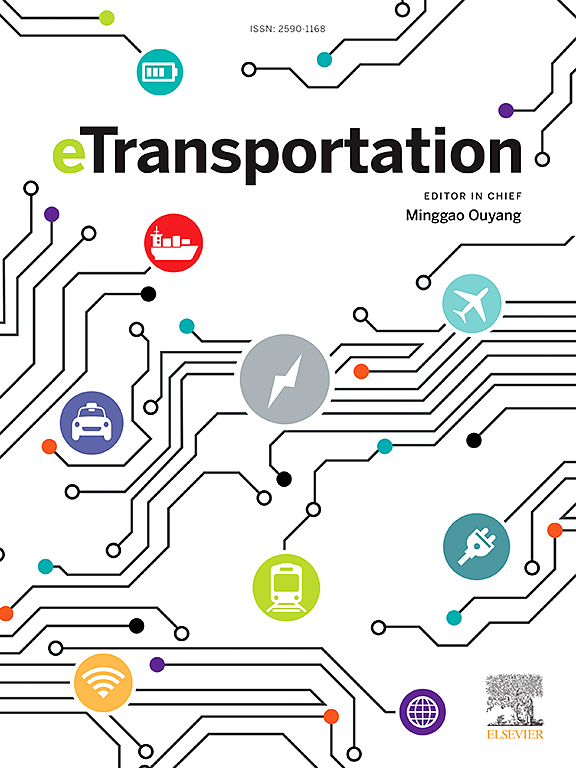Paving the path toward silicon as anode material for future solid-state batteries
IF 17
1区 工程技术
Q1 ENERGY & FUELS
引用次数: 0
Abstract
Solid-state batteries (SSBs) have emerged as an important technology for powering future electric vehicles and other applications due to their potential for enhanced safety and higher energy density compared to lithium-ion batteries (LIBs). Among future energy storage systems, SSBs (either semi or full SSBs) are the most promising candidates in terms of safety, cost, performance, and compactness. There has been a great effort to utilize silicon (Si) anode in SSBs due to its high specific capacity (3590 mAh g−1), low cost, and earth abundance. SSBs with silicon anodes displayed attractive application prospects. The current research efforts showed that there is a great need to understand electrochemical performance, especially the interphase behavior, Si material design, and advanced tools for analytical characterization. In this review, we provide insights about the Si anode design, interface issues, SEI formation, failure mechanisms, and material modifications for the development of next-generation Si-based SSBs of use to bridge the gap between applied research and industrial scale applications.

为硅作为未来固态电池的负极材料铺平道路
与锂离子电池(lib)相比,固态电池(SSBs)具有更高的安全性和更高的能量密度,因此已成为未来电动汽车和其他应用的重要技术。在未来的储能系统中,固态电池(无论是半固态电池还是全固态电池)在安全性、成本、性能和紧凑性方面都是最有前途的候选者。由于硅(Si)阳极具有高比容量(3590 mAh g−1)、低成本和稀土丰度,因此在ssb中使用硅(Si)阳极已经付出了很大的努力。具有硅阳极的固态固体材料显示出诱人的应用前景。目前的研究表明,有很大的需要了解电化学性能,特别是相间行为,硅材料的设计,以及先进的分析表征工具。在这篇综述中,我们提供了关于硅阳极设计、界面问题、SEI形成、失效机制和材料修改的见解,用于开发下一代硅基ssb,以弥合应用研究和工业规模应用之间的差距。
本文章由计算机程序翻译,如有差异,请以英文原文为准。
求助全文
约1分钟内获得全文
求助全文
来源期刊

Etransportation
Engineering-Automotive Engineering
CiteScore
19.80
自引率
12.60%
发文量
57
审稿时长
39 days
期刊介绍:
eTransportation is a scholarly journal that aims to advance knowledge in the field of electric transportation. It focuses on all modes of transportation that utilize electricity as their primary source of energy, including electric vehicles, trains, ships, and aircraft. The journal covers all stages of research, development, and testing of new technologies, systems, and devices related to electrical transportation.
The journal welcomes the use of simulation and analysis tools at the system, transport, or device level. Its primary emphasis is on the study of the electrical and electronic aspects of transportation systems. However, it also considers research on mechanical parts or subsystems of vehicles if there is a clear interaction with electrical or electronic equipment.
Please note that this journal excludes other aspects such as sociological, political, regulatory, or environmental factors from its scope.
 求助内容:
求助内容: 应助结果提醒方式:
应助结果提醒方式:


